Labels for Safety, Visual and Facility ID Desktop Printers
Getting started with label automation
How to make the biggest impact with your automation investment
As technology continues its rapid advancement, the buzz around the use of automation and artificial intelligence in manufacturing grows. However, it’s proving to be more than just talk.
A 2017 Deloitte survey on Robotic Process Automation (RPA) found 53% of the respondents were already using machines to perform jobs previously completed by humans. That number is predicted to increase to 72% by 2020 with an anticipated near-universal adoption by 2022.
The same study found that RPA investment payback was achieved in less than 12 months, with an average of 20% of full-time equivalent capacity provided by robots. Due to this, those who have already implemented RPA expect to significantly increase their investment in RPA over the next three years. That means, if you aren’t already considering how you can use automation in your own workplace, you’re likely falling behind your competition.
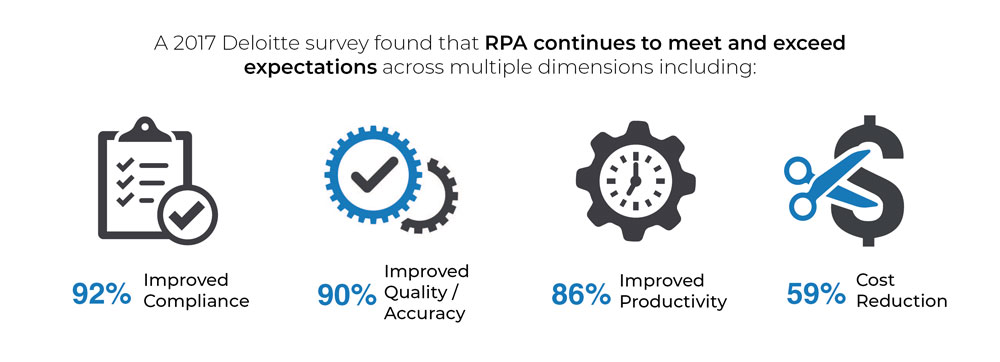
Figure 1. RPA performance data. Adapted from “The robots are ready. Are you?” by Deloitte, p. 2. Retrieved from www.deloitte.com/us/rpasurvey. Copyright 2018 by Deloitte Development LLC.
Making the most of your automation investment
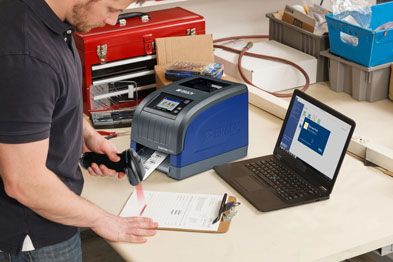
If you’ve been paying any attention to the evolution of automation in recent years, you likely understand the benefits the technology touts — higher throughput, better craftsmanship and reduced overhead. Too often companies jump head first into their automation journey with a large capital expenditure only to discover months later the initiative isn’t performing as projected.
To ensure your automation investment delivers on expectations, your operation must fully map your value stream to identify bottlenecks, labor-intensive steps and opportunities for improvement. Many times, simple process improvements or procedure changes can do as much to increase throughput as adding material handling, sophisticated robots or sharp algorithms.
5 manufacturing areas that can benefit from automation
Automation should be viewed as a journey that requires careful planning and prioritization to be successful. Getting started isn’t too difficult when you start with a simple framework. To begin, review your business processes to identify those impacted by one or more of the following:
Ergonomic issues
Factory motion and movement
Repetitive tasks
Rate limiting steps
Non-value added steps
Ergonomic issues
The efficiency at which people go about their work is impacted greatly by tools, processes and their role; ergonomics aims to study and optimize these efficiencies.
Poor ergonomic processes result in poor productivity but, even worse, they can impact employee health and safety. With a few inexpensive improvements, you can create better ergonomics for material handlers, assemblers, operators, inspectors and machinists that have little impact on other areas.
To identify areas for improvement, seek out ways your current laborers could improve their efficiency. For further improvements, look to lean manufacturing and continuous improvement principles. These principles can be adapted to enhance throughput, contributing to a healthier work environment by creating less physically taxing work for your employees. In other cases, backbreaking or tiring work should be replaced by automated or semi-automated equipment.
Factory motion and movement
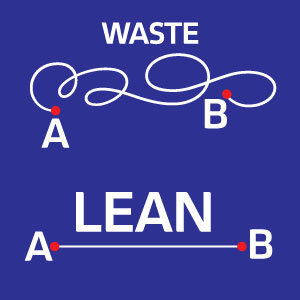
Creating a spaghetti diagram of your workflow is one of the easiest ways to find motion in your production processes. A spaghetti diagram is a visual representation that uses a continuous flow line to trace the path of activity through a process. These maps show the flow of material through production and, often times, the movement is based on inherited old processes using unsupported products.
Visible material, equipment and personnel movement through a factory is a sign of an unoptimized process. To improve these processes, many companies rearrange their facility to reduce walking time and shorten delivery routes, while others are turning to powered cart delivery or adding conveyor systems. People and products in motion can also be viewed as time waste that could be used to make more high-value products.
Repetitive tasks
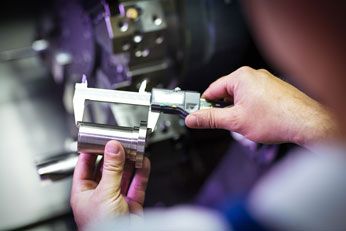
Steps that repeat can be good candidates for automation. Repetitive tasks are targeted typically for two reasons: they are easier to automate than more complicated steps, and the work is tedious. Automating repetitive tasks becomes more desirable the more the step repeats.
Consider an inspection process to check product weight and dimensions. The work is often completed by an individual who checks the weight on a balance and physically measures the part using a ruler or guide. Repeating this process 1,000 times every day could easily yield mistakes. Instead, a calibrated vision system and a mass balance driving a product lifecycle could allow a faster check, a mistake-free inspection, and a quick green-light to advance the work.
Now, consider the same process from the worker’s perspective. How would you feel if you spent half your day inspecting product? It’s more than likely you wouldn’t feel rewarded by your job. When you free up the operator’s time to instead run steps that advance the craftsmanship of the product, their job instantly becomes more rewarding.
Automation becomes a priority when a task is repetitive, it escalates as an ergonomic issue, it is non-value added or it creates a bottleneck.
Rate limiting steps
Rate limiting steps or bottlenecks are the primary pain points of your operations. Increasing the flow of product through these rate-limiting steps is almost always guaranteed to offer a payback on your return. While bottlenecks can be fixed by adding more shifts, capacity and personnel, the cost of those changes can be high and do not yield the best return.
Bottlenecks are targeted for automation because there’s an immediate need for improvement, even though automating certain steps may be more expensive in the near term than adding an operator. However, the long-term impact can be worth the effort.
Keep in mind that fixing the immediate issue may lead to another bottleneck, making your investment seem wasteful. That’s why we recommend mapping out the capacity of each step to deeply understand the true value an automation project will bring.
Non-value added steps
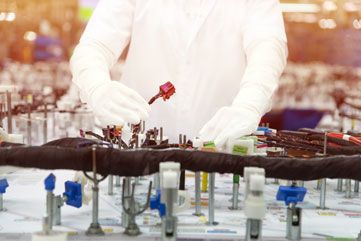
It may sound odd, but many efficiencies are lost on things that don’t directly impact the value provided by your products. Non-value added work can be mandated by external or internal sources and customers aren’t willing to pay more for the additional work. However, that doesn’t mean we can avoid the work either.
Inspections and labels are good examples of non-value added steps. Consider your quality management system — the product has to work, but a customer may not care about the lengths you took to make it that way. It’s important to ask yourself:
- How I can keep my Defective Parts Per Millions (DPPM) low but with less effort?
- Can I automate my tests and inspections to save time and money while still delivering exceptional quality?
Now, consider your internal traceability program. You know you must batch and serial label all the goods you are producing to limit your liability or loss in the event of a quality incident, investigation or recall. However, many customers see traceability as a non-value added step versus recognizing the value it actually provides. If your operators are spending a significant amount of time typing or handwriting label data, you’re likely not being very efficient with this required work.
Where do I start?
The daily management of their production schedules and activities keep manufacturers busy. Typically that daily management is broken down into several focus areas such as warehousing raw materials, assembly, and packaging. Each of these functions may exist as a separate and dedicated area or occur integrated into other processes.
For quick reference, we’ve rated each functional area against the anticipated improvement areas against the five most common automation objectives. These representative ratings are based on our experience in helping drive cost savings with our customers via automation assessments and consultations.

Warehousing
Warehousing encompasses all efforts to source, procure, receive, approve, inventory and deliver raw materials used to manufacture the product. Common issues include movement inefficiencies, material storage and ergonomic issues like searching for and retrieving raw materials.
Labeling
Labeling comprises all elements of proper product marking including correct data from Enterprise Resource Planning (ERP) system, work order management, batch control, serialization, regulatory and compliance, product inspection, finishing, branding, and packaging. Due to the interconnected nature of labeling with other process steps and the low cost to implement automation solutions, it’s often among the first projects undertaken.
Converting
Converting steps transform the raw materials into value-added products through cutting, molding, stamping, brazing, or other physical transformations during production. Because many of these steps entail challenging and repetitive tasks, they’re often targeted for improvement because of employee health and safety concerns or a potential bottleneck in the value stream.
Assembly
Assembly includes all required additive manufacturing steps including fixing, welding, fastening, soldering, etc. Assembly is repetitive in nature, which is often why it's targeted for automation. Automating the assembly process can improve the consistency and quality of the finished goods.
Assembly requires many parts to arrive just-in-time and can result in material movement inefficiencies. Because assembly typically combines multiple raw material streams into one, it’s often the production bottleneck.
Inspection
Product inspection is an important step to ensure you’re meeting customer requirements and expectations. The quality of the inspection process can either make or break a business; however, these diagnostic tests don’t make your product any more valuable.
Inspection work can be monotonous and a source of bottlenecks, especially if you’re doing 100% of the inspection. For manufacturers seeking to advance their automation competence, quality control efforts are usually the first projects recommended to tackle and are relatively inexpensive to initiate.
Finishing
Finishing steps include any final aesthetically- or functionally-oriented procedures that complete the product. As the final stage of production, these are often value-added and include product customization, which means they aren’t necessarily repetitive. Finishing processes are most often automated when there is a bottleneck or if they represent the bulk of the work in the value stream.
Packaging
The packaging process is frequently identified for automation to drive savings. Packaging automation projects can be expensive but, because just about every manufacturer shares the same problems and concerns, many solutions exist in a variety of price ranges. These solutions could provide additional benefits if you operate a distribution center out of the same facility as your manufacturing operation. Pick and fulfillment automation can make employees more productive and help you meet same-day product ship goals that support the just-in-time manufacturing model.
Considering cost
Automating your production areas can be costly, which is why it's important to consider the opportunity cost of addressing a single large objective versus improving multiple smaller incremental changes. Just remember that the lower the cost to implement, the faster the return is seen. If completed as part of a larger automation push, the increased bandwidth from several smaller projects can be reinvested to address other objectives.
Taking into consideration the cost and five principle reasons to automate, we recommend that you look at labeling automation as one of your first projects. Labeling isn’t always a separate function, it’s often integrated into the converting, inspecting, finishing and packaging processes.
Begin by looking at how keystroke or transcription errors, label printing and label application slow down your operations. Automating or semi-automating your labeling process requires little upfront investment, yet it can dramatically reduce errors and time spent fulfilling non-value added regulatory, commercial and traceability requirements.